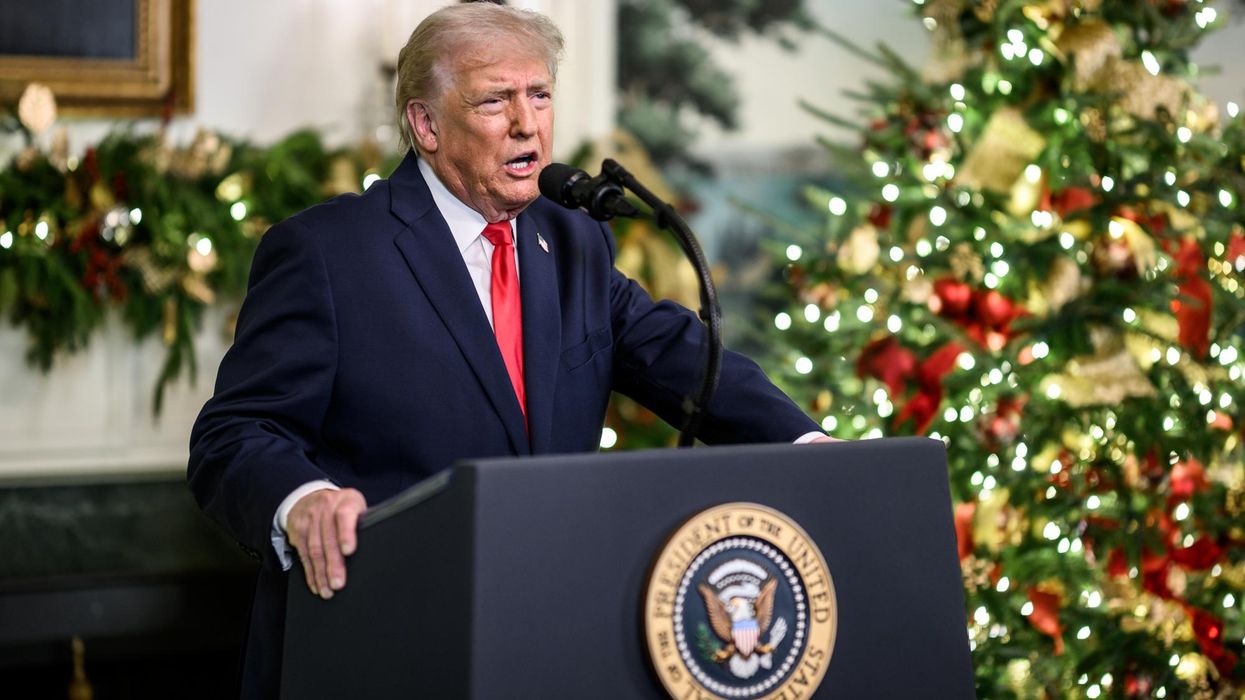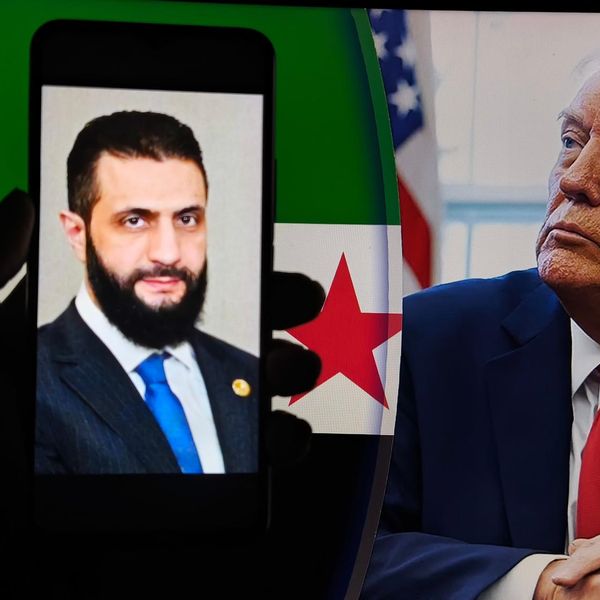Like many millions of Americans, I came of age in a post-9/11 world in which our political views and attitudes toward war were defined by its aftermath. Despite the failures and implications of America’s wars in Afghanistan and Iraq — which illustrate an incoherent understanding of the nature of war, its purpose, or the nations that we target — hawkish voices in Washington continue to advocate for yet another war in the Middle East against Iran. As an Iranian American, war with Iran has been a persistent fear, and the ongoing hostility between the two states has shaped my experience at home in the United States.
In fact, the systematic demonization of Iran and dehumanization of Iranians, and by extension Americans of Iranian heritage, has adversely impacted U.S. policy positions on Iran, while undermining the rights of Iranian Americans at home. I examined the process of this demonization and how it permeates American political discourse, media, and popular culture in a newly-released comprehensive report, and the findings in the report are relevant to our current contretemps with Iran.
Dehumanizing Iranians
Though recent history may lead one to believe that Iran and the United States are age-old adversaries, the two states once shared a mutual admiration and history. While Iran was caught in the crossfires of Britain and Russia’s “Great Game” and the effects of European colonialism, the U.S. was seen as a revolutionary state that did not interfere in their affairs. This all changed with the U.S./British coup of 1953, when Washington not only intervened directly in Iran’s internal affairs, but actually carried out a plot from the old imperialist handbook.
Years later, when Iranian students, fearing another U.S.-led coup to restore the Shah, seized the U.S. embassy in November 1979, the vast majority of Americans were totally unaware of the ghosts of 1953. Yet the hostage crisis itself came to define U.S. views on Iran.
Anti-Iranian attitudes in the U.S. cannot be entirely separated from racism or Islamophobia. However, the contemporary political hostilities between the two states and the hostage crisis gave Iran a unique place in U.S. political rhetoric. The event — and the humiliation it came to symbolize — became so embedded in the American psyche that it spilled into American popular culture and continued to be used by U.S. politicians decades later to express enmity towards Iran. More than 40 years later, President Trump evoked the memory of the crisis when he threatened to attack 52 cultural sites in Iran, one for every American taken hostage in 1979.
Starting in the 1980s, film and television portrayals of Iran, and Iranian people, replayed orientalist stereotypes that turned an entire people into a caricature of villainy. From cartoonishly racist Saturday Night Live skits — where actors simply speak gibberish to imitate Persian speakers — to problematic films like Not Without My Daughter that intentionally paint Iran and Islam both as inherently backwards and fanatic, such depictions have become commonplace.
Images of Iran and Iranians in Hollywood often reflect the political rhetoric of hawkish U.S. politicians — such as the Showtime series Homeland, which had Iran “violating” the nuclear deal before it had even been concluded in real life, or the 2014 Robocop film, which had AI “peacekeepers” unleashed on Tehran to market an arms corporation’s merchandise. Throughout these accounts, Iranians are stripped of their humanity and instead, reduced to enemy targets.
These portrayals are reflected in the language of U.S. politicians and news media. While Sen. John McCain jovially sang a parody song about bombing Iran and his fellow “amigo,” Sen. Lindsey Graham, quipped about how terrible it would be to have Iranian genes, then-Under (and currently Deputy) Secretary of State Wendy Sherman testified in a Congressional hearing that deception is part of Iranian DNA. The mainstream media, meanwhile, often parrot official talking points on Iran that depict it as a central threat to the United States. Despite the lessons of the Iraq war and the false foundation of WMDs on which the war was publicly justified, 18 years to the day of the invasion, Yahoo News ran a piece by former CIA Director James Woolsey titled “Iran Probably Already Has the Bomb. Here’s What to Do About It.”
Policy impacts
Such zealous anti-Iran attitudes color U.S. policy decisions and influence American views toward war. It should be no surprise that research shows a positive correlation between “racial resentment” and support for military action against Iran. It is the process of dehumanization that produces policies that devastate millions of innocent people. Relying on stereotypes based on ideology reinforced by popular culture and political demagogy, as opposed to rational analysis and serious attempts to understand motivations of the “other” has led to policies that undermine U.S. and global security interests, adversely impact innocent people in Iran, and hurt the Iranian American community.
In the 1980s, Washington supported Saddam Hussein after his illegal invasion of Iran, only to target him later in two different wars. Over the decades, different U.S. administrations have rejected overtures by various Iranian presidents to improve relations or, as in the case of the Trump administration’s 2018 withdrawal from the Iran nuclear deal and “maximum pressure” policy, added insult to injury.
Though it is Iranians living in Iran who have borne the brunt of Washington’s unjust policies, Iranian Americans have also experienced discriminatory policies, an atmosphere of hostility at home, and the helplessness of watching their loved ones in Iran suffer under the collective punishment of sanctions and fears of war.
In addition to experiences that Iranian Americans describe with prejudice in the workplace, school, airports, and more, there are real-life consequences of U.S. policies that impact their lives. Iranian Americans have had their bank accounts closed without cause or explanation, and their transactions and accounts frozen on payment apps simply for using words like “Iran” or “Persian.”
A labyrinth of sanctions and regulations make it prohibitive for them to do simple tasks that Americans of other backgrounds take for granted, such as mailing something to their family abroad or sending money to assist them. The community has faced accusations of dual loyalty simply for being of Iranian heritage, endured discriminatory questions when entering the United States as a U.S. citizen, and suffered from immigration policies that have separated families and prevented family members from Iran from visiting them. All of these experiences have contributed to an overall sense of hostility in the country they call home.
A way forward
From threats of war to devastating sanctions and immigration bans, our policies have often undercut U.S. interests and the values our country claims to promote. However, while U.S. policy and thinking have depicted Iran as a prime adversary for decades, a peaceful alternative is possible. But we must first acknowledge the prejudice and biased attitudes that have contributed importantly to our current state of affairs.
By recognizing our mutual grievances and, in the U.S., by identifying the attitudes that have dominated popular thinking about Iran for so long, we can begin to move forward. We cannot simply bomb Iran’s nuclear program out of existence, nor can we afford to engage in another costly war. The United States finds itself at an inflection point, where we must decide between a path forward that will continue to be marred by racist mentalities and belligerent policies and one that will be based on coexistence and mutual respect.
















